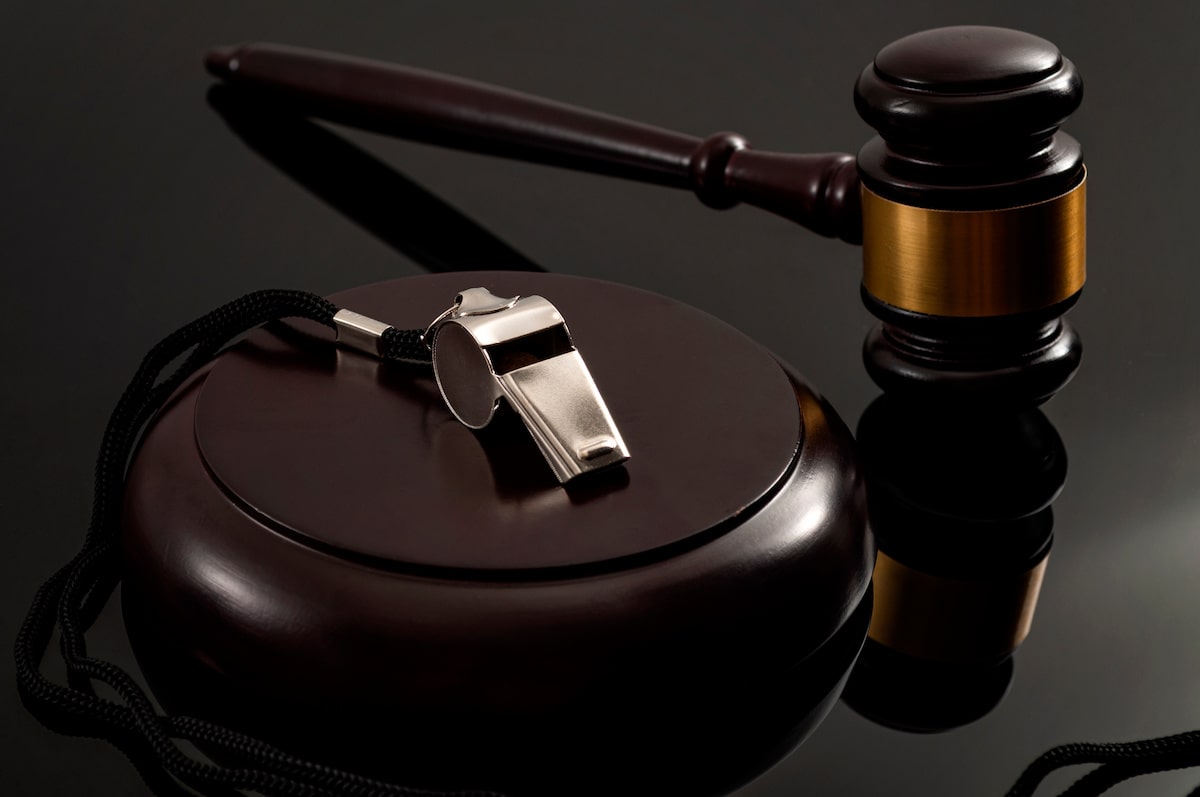Qui Tam embodies a mechanism for individuals to act as whistleblowers in cases of fraud against the government. While its origin lies in the False Claims Act, Qui Tam action has woven its way into various legal domains, including insurance law, where its implications can be profound, particularly in the realm of first-party property insurance.
What Is Qui Tam?
Qui Tam refers to a legal provision under the False Claims Act that empowers private individuals, known as “whistleblowers” or “relators”, to file lawsuits on behalf of the government against parties suspected of defrauding the United States. In fiscal year 2023, Qui Tam lawsuits accounted for a substantial portion of settlements and judgments reported by the government, totaling over $2.3 billion out of $2.68 billion. Congress strengthened the False Claims Act in 1986 to incentivize whistleblowers to expose fraud, leading to an increase in Qui Tam actions ever since. In 2023 alone, there were 712 Qui Tam actions filed, with an average of over 13 new cases weekly.
As Principal Deputy Assistant Attorney General Boynton said, “We are grateful for the hard work and courage of whistleblowers who play a critical role in identifying fraud, often at substantial risk to themselves.”
What Does Qui Tam Have To Do With Insurance Law?
Within the realm of insurance law, Qui Tam intersects prominently, especially concerning first-party property insurance. Qui Tam, in the context of insurance, often revolves around fraudulent claims submitted to insurance companies (ranging from inflated damage assessments to fabricated incidents), but not limited to, insurance companies submitting false records to support fraud after a disaster such as a hurricane. As many fail to realize, policyholders are not always the “fraudsters” or “villains” of the story.
What Is the False Claims Act?
The Qui Tam framework lies within the False Claims Act (FCA), 31 U.S.C § 3729-3733. The FCA is a federally enacted law originally from 1863 in responses to defense contractor fraud during the American Civil War. In addition to allowing the United States to prosecute perpetrators of fraud, the FCA allows private individuals to file suits on behalf of the government.
What Is a Relator in a Qui Tam Action?
A “relator” in a Qui Tam action is the whistleblower who initiates the legal proceedings against the perpetrators of fraud in the interest of the public and/or government. The relator typically serves as the driving force in the Qui Tam lawsuit due to having insider knowledge or evidence of fraudulent activities.
What Is an Example of a Qui Tam Action?
A prime example of a Qui Tam action in the insurance industry is that of Rigsby et al v. State Farm Fire and Casualty Company, which has been mentioned in previous blog posts. Rigsby involved allegations of fraud against State Farm Fire and Casualty Company regarding its handling of Hurricane Katrina insurance claims.
The plaintiffs, the Rigsby sisters, who were former employees of a company that worked for State Farm, filed a lawsuit under the False Claims Act, claiming that State Farm fraudulently manipulated damage assessments to avoid paying policyholders’ claims. Despite the United States not seeking to intervene, the case resulted in a significant legal battle, with the court ultimately finding State Farm liable for fraudulent conduct and awarding damages.
If you’re curious to read more on the courageousness of the Rigsby sisters see:
- State Farm “Qui Tam” Hearing Raises Issues of Wrongful Adjustment
- State Farm Whistle-Blower Suit Regarding Altered Expert Reports Continues
- State Farm Found Guilty of Fraudulent Claims Conduct in Rigsby Qui Tam Case
- Rigsby Sisters Win Qui Tam Appeal Regarding Fraudulent Handling of Katrina Flood Claims
- State Farm Claims Whistleblowers Win in United States Supreme Court and May Get Additional Evidence of Wrongdoing
What Happens During a Qui Tam Lawsuit?
A Qui Tam action consists of a whistleblower or relator confidentially filing under seal a complaint in federal district court. A copy of the action with material evidence is confidentially served on the United States Attorney General. The Department of Justice reviews the action with accompanying evidence and decides whether to intervene in the case.
If the United States intervenes, the United States takes over the litigation. If the United States chooses not to intervene, the whistleblower may proceed alone. The FCA establishes specific procedures for relators to follow, such as “The complaint shall be filed in camera, shall remain under seal for at least 60 days, and shall not be served on the defendant until the court so orders.” [1]
How Long Do Qui Tam Cases Take?
As with any other case, it is difficult to gauge how long a Qui Tam action may take. The duration of a Qui Tam action varies on several factors, such as the caseload of the courts, cooperation of the parties, and complexity of the issues. Notwithstanding this, Qui Tam actions may be resolved within a few years, while others may take longer due to the intricacies of the case and allegations.
What Is the Statute of Limitations for Qui Tam Lawsuits?
Under 31 USC § 3731 (b) (1-2):
(b) A civil action under section 3730 may not be brought—
(1) more than 6 years after the date on which the violation of section 3729 is committed, or
(2) more than 3 years after the date when facts material to the right of action are known or reasonably should have been known by the official of the United States charged with responsibility to act in the circumstances, but in no event more than 10 years after the date on which the violation is committed, whichever occurs last.
This means that the statute of limitations for Qui Tam lawsuits is six (6) years after the violation was committed or three (3) years after the United States official knew of material facts, whichever occurs last, but not exceeding ten (10) years after the fraud.
According to United States v. Cochise, the False Claims Act’s three-year limitations period, which begins to run when the relevant government official has notice of the fraud and which is an alternative to the six-year limitations period that begins to run on the date of the fraud, applies to a relator’s Qui Tam action even if the United States declines to intervene. [2]
Qui Tam Rewards
Whistleblowers play a vital role in Qui Tam actions and a reward serves as both a recognition of their contribution to justice and an encouragement for others to step forward in exposing fraud. While Qui Tam actions can be pursued either by the government or the relator, this past year, significant recoveries have been obtained by both.
Do Whistleblowers Get a Percentage in a Qui Tam Lawsuit?
Whistleblowers or relators do in fact get a percentage in a Qui Tam lawsuit that ranges from 10%-30% of the total recovery if the Qui Tam action is successful. According to 31 U.S.C. §3730 (d), the exact percentage varies.
If the government proceeds with the action, the individual bringing the action is entitled to receive between 15 to 25 percent of the proceeds of the action or settlement, contingent upon their substantial contribution to the prosecution.
However, if the action is primarily based on specific disclosures from sources other than the individual bringing the action, the court may award up to 10 percent of the proceeds, considering the significance of the information and the individual’s role in advancing the case. Additionally, the individual is entitled to receive reasonable expenses, attorneys’ fees, and costs, which is awarded against the defendant.
If the government does not proceed with the action, the individual bringing the action or settling the claim is entitled to receive a reasonable amount for collecting the civil penalty and damages, which must be between 25 to 30 percent of the proceeds of the action or settlement. Similar to the previous scenario, the individual is also entitled to reasonable expenses, attorneys’ fees, and costs.
Further Qui Tam Resources
- False Claims Act Settlements and Judgments Exceed $2.68 Billion in Fiscal Year 2023
- Florida False Claims Act
Hiring an Attorney for Qui Tam
Qui Tam actions assume a critical role in safeguarding against fraudulent activities that undermine the justice system and integrity of the insurance industry. As whistleblowers continue to champion this cause, the assistance of an experienced team of attorneys assist in navigating through the complexities of commencing a Qui Tam action.
With over 39 years of practice and $2 billion in recovered claims, our team stands by your side to ensure you can face any insurance challenge with confidence. Contact us today for a consultation, or read more about how we act as your trusted advocate.
Quote of the Day:
“Justice cannot be for one side alone, but must be for both.” – Eleanor Roosevelt
[1] §3730(b)(2). [2] United States ex rel. Hunt v. Cochise Consultancy, Inc., 887 F.3d 1081 (11th Cir. 2018), aff’d, 139 S. Ct. 1507, 203 L. Ed. 2d 791 (2019).




